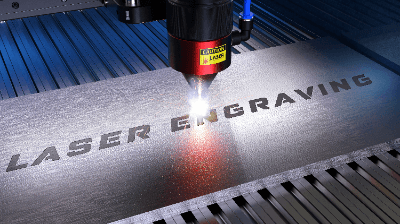What Is a Laser Engraving Machine?

A laser engraving machine is a precision device that utilizes a laser oscillator to etch text and graphics onto various materials. The laser beam generates intense heat on the workpiece’s surface, causing the material to melt and vaporize, enabling the engraver to create intricate grooves. Typically, high-power CO2 lasers or fiber lasers are employed in these machines.
Laser engraving machines used in stores and industrial facilities often feature laser outputs ranging from tens to hundreds of watts. The engraving depth and speed depend on the laser’s power output and its synergy with the stage and other drive systems.
Recently, smaller laser engraving machines with around 3000mW output power have become available for home use.
Uses of Laser Engraving Machines
Laser engraving machines are capable of etching various materials, including acrylic, metal, wood, and leather.
The range of processable materials depends on whether a CO2 or fiber laser is used in the oscillator.
1. CO2 Laser
CO2 lasers can engrave a wide array of materials, such as acrylic, wood, stone, and leather. This versatility makes CO2 laser engravers valuable in numerous industries.
2. Fiber Laser
Fiber lasers excel at engraving metals (aluminum, copper, brass, stainless steel, etc.) and are occasionally used for engraving parts.
Principle of Laser Engraving Machines
Laser engraving machines are typically used in tandem with image processing software. Data is transferred from a computer to the engraving machine for irradiation and processing.
Essentially, laser processing machines for engraving, marking, and welding comprise a laser oscillator, optical pathway, drive system, focusing optics, and, when necessary, a fixture or stage to secure the material in place.
Laser engraving machines offer two primary irradiation methods: the XY plotter method and the galvanometer method.
1. XY-Plotter Method
In the XY-Plotter Method, the head, equipped with a mirror and lens, moves along the XY-axis for irradiation.
2. Galvano Method
The Galvano Method incorporates a Galvano mirror in the head, which pivots the laser beam by moving the mirror. This allows for swift processing via small mirror movements, but it has a limited processing range.
In laser engraving, the choice of laser oscillator is also crucial. CO2 lasers are versatile and can work with a wide range of materials, including acrylic, wood, leather, fabric, and paper, but they are less suitable for highly reflective metals. Fiber lasers, on the other hand, excel at engraving materials like aluminum, copper, brass, and other metals.